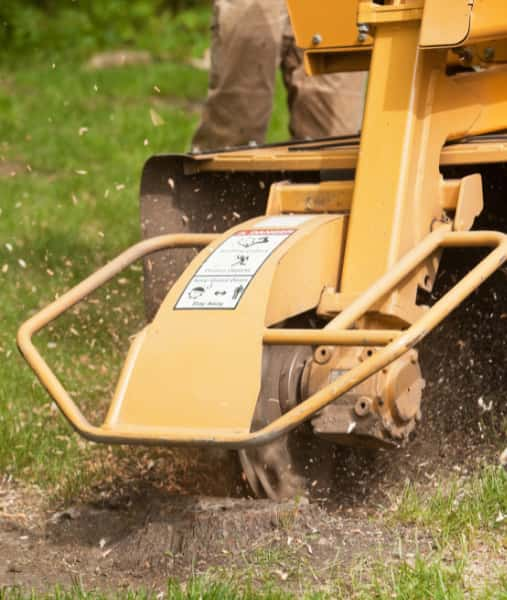Introduction
Pruning is an essential part of tree care, but when done incorrectly, it can cause more harm than good. Precision pruning is a technique that involves carefully selecting which branches to remove, ensuring trees remain healthy, structurally sound, and visually appealing. By making strategic cuts, trees can grow stronger, resist disease, and thrive for years to come.
At Royston Tree Surgeons, we specialise in expert tree pruning services in Royston, Hertfordshire. Whether you have a garden tree that needs shaping or a mature tree requiring structural adjustments, understanding the benefits of precision pruning can help you make the best choices for your landscape.
Key Takeaways
- Precision pruning promotes healthy growth and prevents structural weaknesses.
- Removing dead, diseased, or crowded branches improves air circulation and sunlight exposure.
- Strategic cuts reduce the risk of storm damage and enhance a tree’s natural form.
- Over-pruning can stress a tree, so professional expertise is essential for long-term health.
- Regular pruning enhances safety by preventing falling branches near buildings and pathways.
What Is Precision Pruning?
Precision pruning is a tree care technique that focuses on targeted cuts to remove problematic branches while preserving the tree’s overall health and shape. Unlike heavy pruning, which can shock the tree, precision pruning uses careful planning to enhance growth, improve structure, and prevent disease.
The Goals of Precision Pruning
- Encourage healthy regrowth by removing weak or overcrowded branches.
- Prevent disease spread by cutting out infected wood.
- Improve air circulation and sunlight penetration to promote strong growth.
- Maintain the tree’s natural structure while reducing safety hazards.
The Key Techniques of Precision Pruning
1. Removing Dead or Diseased Branches
One of the most important aspects of pruning is removing branches that are dead, dying, or diseased. These branches can attract pests, spread fungal infections, and pose a risk of breaking during storms. Carefully cutting them away helps trees allocate resources to healthy growth.
2. Thinning for Airflow and Light Penetration
Overcrowded branches can restrict airflow, leading to moisture buildup and increasing the risk of fungal diseases. Thinning removes select branches to create space, allowing better sunlight exposure and improving the overall health of the tree.
3. Structural Pruning for Stability
Young trees benefit from structural pruning, which guides their growth and prevents weak limb attachments. By selecting a strong central leader and evenly spaced branches, a tree is more likely to develop a stable and well-balanced structure.
4. Crown Reduction for Size Control
When a tree becomes too large for its surroundings, crown reduction can help reduce its height and spread. This method involves shortening select branches while preserving the natural shape of the tree. It is often used for trees growing near buildings, power lines, or roads.
5. Directional Pruning for Future Growth
Precision pruning can also shape a tree’s growth direction by removing branches that interfere with structures or neighbouring plants. By guiding growth in a controlled manner, trees can be maintained without needing drastic cuts later.
Why Precision Pruning Improves Tree Health
1. Reducing Stress and Shock
Over-pruning or improper cuts can cause unnecessary stress to a tree, leading to weak regrowth and disease vulnerability. Precision pruning ensures that only necessary branches are removed, allowing the tree to heal efficiently.
2. Preventing Safety Hazards
Weak or overhanging branches can pose a significant risk, especially during high winds or storms. Regular precision pruning helps prevent sudden branch failure, protecting people, property, and nearby power lines.
3. Extending Tree Lifespan
A well-pruned tree experiences less structural strain and is more resistant to environmental stressors. By removing damaged or poorly positioned branches, trees can grow stronger and live longer.
4. Improving Aesthetic and Property Value
Well-maintained trees enhance the appearance of a property, increasing kerb appeal and adding value to a home or business. A properly pruned tree maintains its natural beauty while preventing overgrowth that may obstruct views or pathways.
When to Prune Trees for Best Results
- Winter (Dormant Season) – Ideal for structural pruning and disease management.
- Early Spring – Best for shaping trees before new growth begins.
- Summer – Helps control excessive growth and remove weak branches.
- Autumn – Limited pruning to remove deadwood, but major cuts should be avoided.
Why Professional Tree Surgery Matters
Precision pruning requires a deep understanding of tree biology and growth patterns. Incorrect pruning techniques can lead to weak regrowth, disease susceptibility, and long-term structural issues. Hiring a professional ensures that trees receive expert care without unnecessary damage.
At Royston Tree Surgeons, we provide professional pruning services in Royston, Hertfordshire. Our team uses industry-approved techniques to enhance tree health, safety, and longevity. Whether your tree needs shaping, thinning, or structural adjustment, our expertise ensures optimal results.
Conclusion
Precision pruning is more than just cutting branches—it’s a strategic approach to improving tree health, safety, and aesthetics. By using targeted cuts to remove deadwood, improve structure, and guide growth, trees can thrive for years to come.
For expert tree pruning in Royston, Hertfordshire, Royston Tree Surgeons offers professional and reliable services tailored to your needs. Contact us today to schedule an assessment and ensure your trees remain in top condition.
Call us on: 01763 295 186
Click here to find out more about Royston Tree Surgeons
Click here to complete our contact form and see how we can help with your tree care needs.

